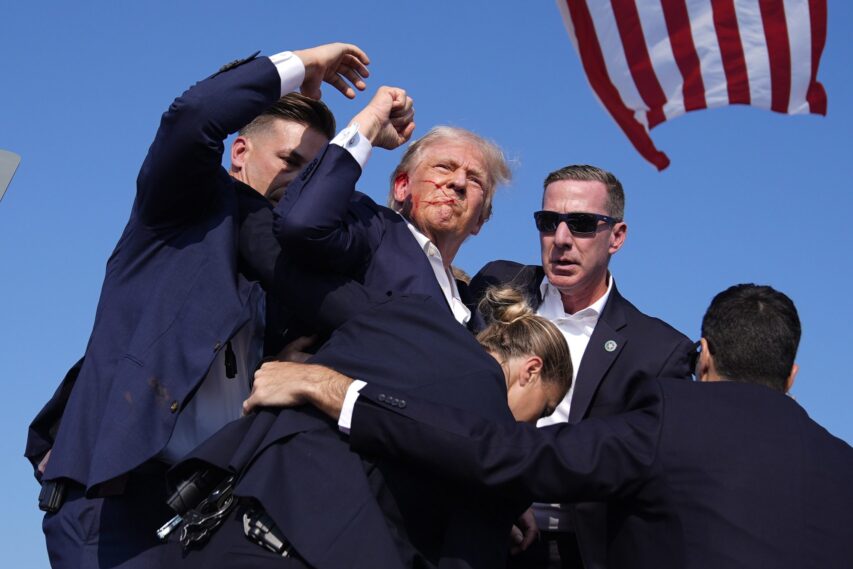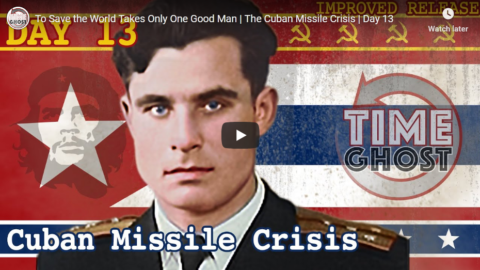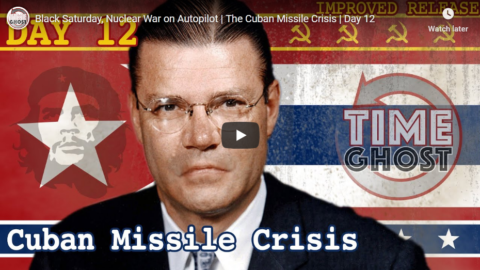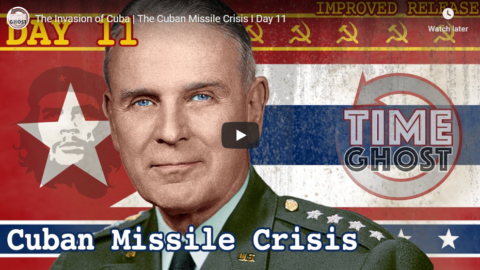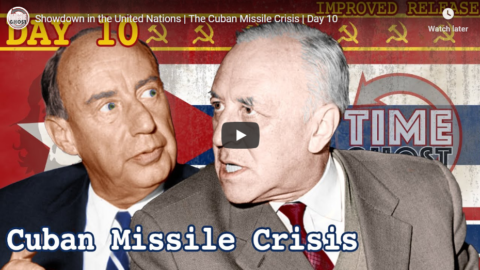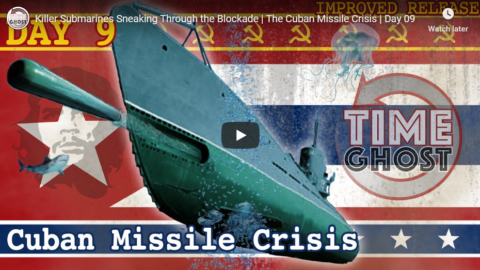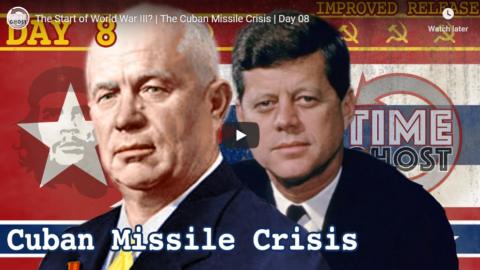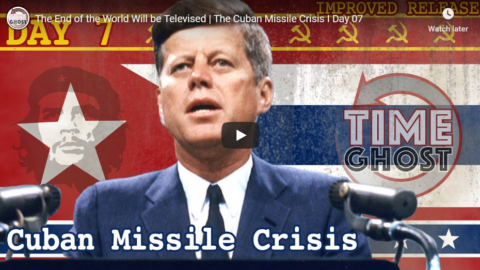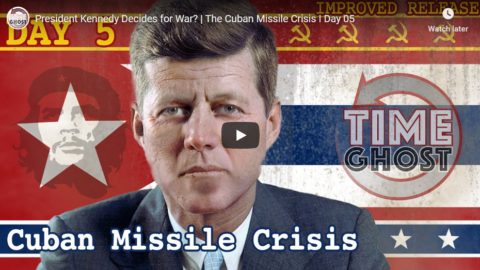In 1963, JFK signed the Community Mental Health Act. Its order to close the state psychiatric hospitals was followed, and hundreds were shuttered; the community mental health centers that were meant to replace them were never built. With far fewer beds for a growing patient population it should not have surprised anyone that the streets gradually filled with the severely ill. But somehow, we were surprised. The state governments were mostly just grateful to save money that had once gone to mental healthcare. The passage of Medicaid two years later deepened the problem. Medicaid’s funding structure presented states with an opportunity to further offload costs, this time onto the federal government. Unfortunately, the private institutions that filled with Medicaid patients were no better than the state facilities that had been closed; often they were worse. And maintaining access to Medicaid funding for such care, in practice, was more complicated and less certain than staying in a state institution. In 1975, the Supreme Court’s O’Connor v. Donaldson decision established a national standard that the mentally ill could only be involuntarily treated if they represented an immediate threat to themselves or others. This completely removed actual medical necessity from the equation, and the standard directly incentivized hospitals to discharge very ill patients, many of whom leave these useless emergency room visits and immediately abuse drugs, self-harm, commit crimes, attack others, or commit suicide. In 1990 the passage of the Americans with Disabilities Act further empowered treatment-resistant patients and created legal incentives that led hospitals to release severely ill people rather than face the burden of litigation. Various state reforms in recent decades have almost uniformly pushed the severely ill out of treatment rather than into it, under the banner of “autonomy”. For sixty years we’ve done everything in our power to make it harder to treat people who badly need care. And here we are.
Freddie deBoer, “We Closed the Institutions That Housed the Severely Mentally Ill and We Made It Dramatically Harder to Compel Them to Receive Care”, Freddie deBoer, 2024-05-14.
August 15, 2024
QotD: The bitter fruit of deinstitutionalization
July 24, 2024
Investigate one assassination attempt, reveal the truth about two earlier assassinations?
I have to admit that I’m skeptical about this, as conspiracies tend to unravel the larger they get (hence the old joke about three being able to keep a secret, if two of them are dead), and the tradition of deathbed confessions has had six decades to reveal itself. However, Benjamin Dichter thinks that a full, honest investigation into the attempt on Donald Trump’s life in Butler, PA would also yield historical dividends on the assassinations of JFK and RFK in the 1960s:
On July 13, 2024, both tragedy and an iconic photograph in American political history emerged from the attempted assassination of the 45th president. Even the harshest critics of Donald J. Trump among the legacy media were forced to acknowledge the moment, which many believe has cemented President Trump as an American icon. This failed assassination has become one of the most pivotal moments in American history, akin to tragedies such as 9/11, Pearl Harbor, and the attempted assassination of Reagan. It is rapidly emerging as a unifying moment for many Americans, signaling that the media’s rhetoric and repeated attempts to label Trump as a dictator, a neo-Nazi, and other unsubstantiated vitriolic claims have gone too far.
Donald Trump, surrounded by Secret Service agents, raises his fist after an attempt on his life during a campaign speech in Butler, PA on 13 July, 2024. One spectator was killed and two others were reported to be in critical condition. The shooter was killed by Pennsylvania State Troopers, according to reports in the succeeding hours.
As a Canadian who has spent much of my life traveling to the US, I have always sensed an underlying, unresolved collective emotional trauma that lingers like morning fog. This trauma stems from the assassinations of President John F. Kennedy and his brother Robert F. Kennedy — both murders believed by the majority of Americans to remain unsolved. More on that in a bit.
A friend of mine, working with the Department of Defense in the domain of security readiness for the US government, has told me the level of incompetence and fumbling of security obligations during Trump’s speech in Butler, PA, was inconceivable. He is not one to be hyperbolic, and we are both believers in Hanlon’s Razor. However, after his long career in the military and then at the Department of Defense, where he learned there is no shortage of incompetence due to government bureaucracy, he insists that the most basic protocols were violated in this case.
How is it possible that anyone could get within 125 yards of a former President and current candidate with a rifle? Not just a small pistol hidden in a pocket, but a large AR-15 platform rifle. “The idea that this could happen uncoordinated is absurd” he said. Even the legacy media is unable to spin their usual ridiculous deflections, which often appear like a frenzy of spawning sharks whenever President Trump is in their midst.
The gravity of this situation has changed everything and heralds a dawn of opportunity for America. For Trump, it is a chance to show the world how the gears of the machine turn. How things really work behind the scene. He is presented with a massive opportunity to seek retribution on behalf of the American people, who are still grappling with unresolved issues from past traumas.
Unlike the tragic assassinations of JFK and Robert F. Kennedy, Trump survived and will likely return to office. Also caught in the chaos were innocent bystanders, notably Corey Comperatore, who sacrificed himself by shielding his family from gunfire, along with two other victims whose injuries were not life-threatening. The innocent victims and their families who will vote in November, make this a situation that hits home with many Americans regardless of party affiliation.
July 15, 2024
Assassins
Political assassination has been thankfully rare in recent decades (with a few exceptions), and the attempted assassination of Donald Trump in Butler, Pennsylvania is the first such attack on a US president or presidential candidate to make the news since Ronald Reagan survived John Hinckley’s attempt in 1981:
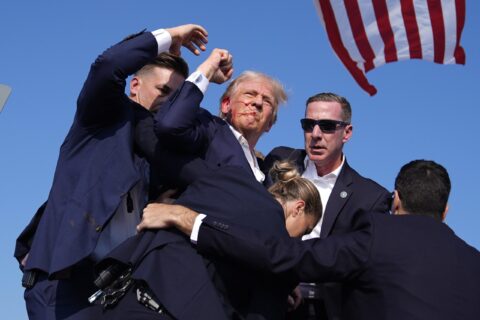
Donald Trump, surrounded by Secret Service agents, raises his fist after an attempt on his life during a campaign speech in Butler, PA on 13 July, 2024. One spectator was killed and two others were reported to be in critical condition. The shooter was killed by Pennsylvania State Troopers, according to reports in the succeeding hours.
The attempted assassination of Donald Trump is unfortunately far from the first against an American president. Four presidents have been assassinated (Abraham Lincoln in 1865, James A. Garfield in 1881, William McKinley in 1901, and John F. Kennedy in 1963), but our history has seen numerous other unsuccessful shootings targeting the nation’s chief executive: against Andrew Jackson, Teddy Roosevelt, Franklin D. Roosevelt, Harry Truman, Gerald Ford (twice), Ronald Reagan, and now Trump.
The first of these unsuccessful attempts came against Andrew Jackson in 1835. An unemployed house painter named Richard Lawrence came at Jackson with a pistol while the president was in the U.S. Capitol attending the funeral of South Carolina representative Warren R. Davis. Lawrence pulled the trigger and attendees heard a crack, but the pistol misfired. Jackson turned on Joseph and swung his cane at the assailant, who took out another pistol, which also misfired. A melee ensued with Jackson screaming, “Let me alone! Let me alone! I know where this came from”, suggesting that Jackson’s Whig enemies had sent the assassin. Among those who tried to subdue Joseph was Davy Crockett, who later said of the incident, “I wanted to see the damndest villain in the world and now I have seen him”. Jackson was unharmed but became more paranoid as a result of the close call. It was a contentious period in American politics; the New York Evening Post deemed incident “a sign of the times.” Joseph spent the rest of his life in a mental institution.
The next three shootings of presidents were unfortunately successful ones; it’s remarkable to consider now that these three assassinations took place over just 36 years, from 1865 to 1901. (What must Americans have thought of “our democracy” then?) The next failed attempt did not come until Teddy Roosevelt’s ill-fated effort to reclaim the presidency in 1912 as a third party candidate. In October of that year, Roosevelt was campaigning in Milwaukee — the site of this year’s Republican convention — when a man named Joseph Schrank shot the former president in the chest. Roosevelt was fortunate that his folded 50-page speech was in his chest pocket and slowed the bullet. The bullet did pierce Roosevelt’s chest but did not penetrate too deeply. The crowd attacked Schrank, but Roosevelt asked that they not harm him, which probably saved Schrank’s life. Roosevelt then went ahead with his speech, famously saying, “it takes more than that to kill a bull moose”. This event has perhaps the most similarities to the Trump shooting, as both Trump and TR were ex-presidents looking to return to the White House, and both Trump and Roosevelt showed defiance after being bloodied.
TR’s cousin Franklin was president-elect in February 1933 when an anarchist named Giuseppe Zangara fired five shots at him and Chicago Mayor Anton Cermak in Miami. The would-be assassin missed Roosevelt but hit Cermak and four other people. Roosevelt was likely saved by Miami housewife Lillian Cross, who pushed Zangara’s arm as he was firing. A gravely wounded Cermak told Roosevelt, “I’m glad it was me instead of you”. He died on March 6, two days after hearing Roosevelt’s inaugural address over the radio. Zangara was executed by electric chair two weeks later.
[…]
Before the Trump attack, the most recent shooting of a president was John Hinckley’s attack on Ronald Reagan in 1981. Reagan was early in his first term and was leaving a speech at the Washington Hilton (now referred to as the Hinckley Hilton by Washingtonians), when Hinckley opened fire, hitting Reagan press secretary Jim Brady, Secret Service agent Tim McCarthy, and DC police officer Thomas Delahanty. Reagan’s protective detail threw him to the floor of his limousine and, thinking he was unharmed, took off back for the White House. Like Ford, Reagan did not like being under a pile and thought the agents had broken his rib. When the president coughed up blood, agent Jerry Parr recognized that Reagan had been hit as well and immediately redirected the limo to George Washington Hospital. This decision saved the president’s life. Even so, it was a close call. A paramedic thought upon seeing a gray-colored Reagan, “My God, he’s code city”, ER lingo for someone who isn’t going to make it.
I have to admit to knowing a bit more than the average person about prior presidential assassination attempts thanks to Stephen Sondheim’s soundtrack to the musical Assassins, which I’ve enjoyed listening to many times over the years.
Niall Ferguson on the historical context of political assassinations (the rest of the article is behind the paywall:
“There was a reason why Rome of Julius Caesar and Florence of the Medici were such dangerous places. Assassination was a feature, not a bug, of republican political systems. However, modern American medicine and the overblown security provided to presidents and former presidents together make it quite likely that both candidates will make it to November 5.”
I wrote those words on July 2. Eleven days later, events proved me both right — assassination is part and parcel of republican political systems — and wrong: this has ceased to be true of the United States.
What happened in Butler, Pennsylvania, on the evening of July 13, is in equal measure shocking and baffling. An inch or two further to the left and the bullet that grazed Donald Trump’s ear would have penetrated his skull and very likely killed him. A slight gust of wind, a tremor of the assassin’s hand, an unexpected move by the former president — for whatever tiny reason, Trump lived to fight another day.
The shooter, Thomas Matthew Crooks, a 20-year-old man from nearby Bethel Park, was a registered Republican but had made a $15 donation to the liberal ActBlue political action committee on the day of Joe Biden’s inauguration, when he was 17. Even more puzzling, this young man (who was barely a teenager when Trump was elected in 2016) was able to take several clear shots at the 45th president from the roof of a factory 130 yards away from the stage of Trump’s rally.
How did the Secret Service snipers stationed just 430 feet away not spot Crooks climbing into position on the roof, when at least one member of the public did see him and claimed that he had warned them? It is hard to think of a good explanation.
And what of the consequences? There are those who would have you believe that history is governed by vast impersonal cycles and that events such as this are mere epiphenomena, historical trivia. It is a claim as old as it is false.
The editors at The Line suspect the US Presidential election has now been decided months before any ballots are cast:
The prospect of someone deciding to take the rhetoric to its most extreme albeit logical conclusion — if Trump is a threat to life as we know it, the threat must be ended — cannot come as a surprise. At this time, we don’t know much about the 20-year-old shooter, Thomas Matthew Crooks, beyond his name, the fact that he was a registered Republican but, also, a one-time donor to a progressive political action committee. We await more information, and hope there aren’t many more like him waiting to try again, or retaliate against a Democratic politician.
For now, we at The Line are pondering what’s next. July 13, 2024 is going to be one of those days that future historians look back upon with a certain wistfulness. If the wind was a little harder, a bullet lands a few inches in another direction, and Donald Trump is dead. In this timeline, though, the shooter missed, and now America is going to witness first hand the problems with relying on violence to secure political outcomes. Namely, it very often backfires.
Because we’ve taken the other fork in the road. We now exist in the other timeline of history — the one in which Donald Trump is now the far-and-away favourite to win a second term.
We could be wrong about this. No one can predict the future, and there are lots of scenarios still unplayed out. Does Biden step down in favour of Kamala Harris? Does the shooting turn out to be a hoax perpetrated by Trump or his supporters? Does Trump suffer a heart attack between now and November? Does someone else get shot? Any of these possibilities is still available, and any one could further change the outcome.
However, at this moment in time, it was hard for us to look at the picture of Trump standing up once the bullets had struck, demanding to be seen by the crowd even as his Secret Service detail tries to get him off the stage, pumping his fist in the air, all framed by an American flag, and think anything but “Well, that’s the ballgame.”
The Line is no fan of Trump, but we are also political observers, and Trump’s handling of the assassination attempt, as political showmanship, was absolutely perfect. Trump displayed an incredible presence of mind in the midst of mortal peril. While the echoes of the gunshots were still ringing, he understood that he needed to forgo some small degree of further protection in order to show his supporters — and the world — that he was fine. No one has to like the guy, or ignore the real risks he poses both to American and Canada, but we do have to respect how he handled that moment, if nothing else. It demonstrated calm nerves and competency under literal fire.
The response shored up Trump’s strengths in a way that highlighted Joe Biden’s comparative frailty. The shooting will absolutely supercharge Trump’s supporters, his base, his cult. There’s no coming back from it.
We don’t know what more to say here, folks. For the record, we at The Line rule out nothing at this early juncture. But if the momentum of history holds on its current track, there’s a very good chance that the next American election is over weeks before anyone bothers to cast a ballot.
October 23, 2023
QotD: The real meaning of “Watergate”
I was reflecting this week on my brief stint, many years ago, as a newspaperman. It was a job I loved. I signed on not too many years after the Watergate scandal, and journalists were still flush with heroic ideas about themselves. Woodward and Bernstein — and all reporters by extension — had toppled a corrupt presidency and saved the republic and the Constitution from the kind of behind-the-scenes government tyranny dramatized in such thriller films as The Parallax View and Three Days of the Condor.
[…]
Recently, reading Mark Levin’s Unfreedom of the Press, I was reminded that, before reporters went on their great crusade against Richard Nixon, they had overlooked a whole lot of corruption in the Democrat presidents who preceded him.
Levin tells how John F. Kennedy, with the knowledge of his brother and Attorney General Robert, nudged the IRS into auditing conservative groups. With Kennedy’s approval, the FBI was also employed to investigate those the administration disliked, including Martin Luther King Jr. Lyndon Baines Johnson would later increase the politically motivated auditing and spying. None of this was uncovered until later on.
Ben Bradlee — the editor of the Washington Post, where Woodward and Bernstein broke the Watergate story — was well aware of his pal Kennedy’s misuse of the tax and investigative agencies. Not only did he not report it, he allowed himself and his paper to be manipulated by information JFK had wrongly obtained.
This totally changes the Watergate narrative. Nixon’s dirty tricks and enemy lists may have been creepy and wrong, but the press exposure of these misdemeanors came after years of ignoring similar and worse malfeasance by Democrat administrations.
That changes what Watergate means. That transforms it from a heroic crusade into a political hit job, Democrat hackery masquerading as nobility. The press turned a blind eye to the corruption of JFK and LBJ, then raced to overturn the election of a man they despised — despised in part because he battled the Communism many of them had espoused.
Andrew Klavan, “‘Watergate’ Doesn’t Mean What the Press Thinks It Means: The press turned a blind eye to the corruption of JFK and LBJ, then raced to overturn the election of a man they despised”, The Daily Wire, 2019-08-31.
August 7, 2022
Allied Tidal Wave in Romania – WW2 – 206 – August 6, 1943
World War Two
Published 6 Aug 2022The Allies bomb the Romanian oil fields, a major Axis source of oil, but it does not go well for the attackers. They do advance in both Sicily and the Solomon Islands — where a future President has one heck of an adventure, and in the USSR a huge Soviet counteroffensive begins, taking Belgorod after just a few days and threatening Kharkov.
(more…)
January 11, 2021
QotD: Conspiracy theories
It is hard to know, but most likely the conspiracy theory is one of the oldest parts of human society. In fact, the popularity of conspiracy theories is probably a good measure of social trust. Low-trust societies, like you find in the Middle East, tend to be shot through with conspiracy theories. High trust societies in Northwest Europe tend to have less of it, but even they are prone to bouts of conspiracy mongering. The Great Fear that swept through rural France is a good example.
In modern times, the conspiracy theory has been formalized. The assassination of John Kennedy is probably when this formalization process began. For example, a conspiracy theory needs a series of hard to accept coincidences. In the case of Kennedy, we have the amazing marksmanship of the shooter and then his unlikely assassination at the hands of a Jewish gangster, while he was in police custody. The Jack Ruby part is what made the whole thing perfect for the conspiracy theorists.
The first step in a conspiracy theory is that the obvious answer or the official answer must be eliminated as a lie or implausible. In the case of the Kennedy assassination, the start of the conspiracy dynamic was the dismissal of Oswald as the lone actor. It is a variation on the old Sherlock Holmes line. Once you eliminate the parsimonious explanation, then the more complex and convoluted explanations become more plausible. That opens the door to endless speculation.
We see this with the QAnon cult on-line. All of it starts with the assumption that the obvious answer is wrong. For example, it is plainly obvious that Bill Barr is covering up the FBI spying scandal. He’s had years to do what should have taken a few months. Instead of accepting that rather obvious and plausible explanation, the QAnon people reject it and instead weave wildly complex theories about how half of Washington is about to be charged with crimes.
Another aspect of the formal conspiracy theory is the liberal use of the associative property to connect unrelated events. Person A knows Person B and Person B once had lunch at the same place as Person C. If any of these three people can be tied to the event in question, then it is assumed the other two are connected. The weakest associations are enough to assume a conspiracy. The associative property is an essential element of the modern conspiracy theory.
In the case of Kennedy, for example, organized crime is a popular player, because Jack Ruby was a minor criminal. His tenuous association with organized crime opens the door for linking any number of underworld characters with the assassination. It also opens the door for all sorts of theories about the Kennedy administration’s connections to organized crime. The associative property then ties communism, organized crime and the Cuba situation to the assassination.
The Z Man, “Conspiratorial Rule”, The Z Blog, 2020-10-01.
December 3, 2020
QotD: Presidential droit du seigneur
For a party that toots its own horn about how it’s all-in for the ladies, the Democrat Party sure has a weird way of showing it. The fact is that when the check comes for its dangerous and degenerate policies, every single time the Dem dudes dine and dash and stick the chicks with the bill.
Let’s look at some of the Dem dudes who do it, starting with the aptly named Bill Clinton. Mr. Felonia Milhous von Pantsuit was all too happy to use women as his personal playthings with varying degrees of consent, ranging from none to “I always wanted to do it in the Oval Office!” And the feminists, the media and the rest of the Democrat Party adjuncts gave him a pass. Some were willing to give him even more. The message was simple: if you are called upon to be a Clinton sex toy, kneel down then shut up for the cause.
This is a Democrat tradition. JFK, when he wasn’t tapping the help he was pimping them out to his buddies in the White House pool. His dalliance with Marilyn Monroe was one thing – she was a consenting adult who could have told him to pound sand (or something else). It’s his serial preying upon the interns and secretaries and other assorted Dem doxies in his orbit that really demonstrates the essential contempt for women that drove his satyriasis – and that (which along with its traditional racism) still drives the Democrat Party.
Oh, and speaking of driving, no discussion of the chronic Democrat abuse of women would be complete without observing that the Lion of the Senate left his booty call du jour to drown in an Oldsmobile at the bottom of a pond. And the same message we hear over and over again to protect Democrat exploiters protected Teddy Kennedy – hey Mary Jo, take one for the team.
She didn’t have much choice about taking one for the team since, in those last agonizing minutes, she couldn’t take a breath.
But hey, Teddy saved abortion, and his ceaseless campaign for a perpetual open season on troublesome fetuses makes it all worthwhile. Abortion is another of those Democrat policies that women get to pay for. The idea that it is somehow empowering or liberating for women is so much garbage. It’s empowering and liberating for men who don’t want to reap the result of their sowing.
Kurt Schlichter, “Women Always Have To Pick Up The Check For Democrats”, Townhall.com, 2020-08-30.
July 20, 2020
To Save the World Takes Only One Good Man | The Cuban Missile Crisis | Day 13
TimeGhost History
Published 19 Jul 2020On Sunday, 28 October, 1962 the Cuban Missile Crisis comes to an end to end all things, and almost everything. Only one young man, Vasili Arkhipov will stand between humanity and nuclear armageddon.
Join us on Patreon: https://www.patreon.com/TimeGhostHistory
Hosted by: Indy Neidell
Written by: Spartacus Olsson
Director: Astrid Deinhard
Producers: Astrid Deinhard and Spartacus Olsson
Executive Producers: Astrid Deinhard, Indy Neidell, Spartacus Olsson, Bodo Rittenauer
Creative Producer: Joram Appel
Post-Production Director: Wieke Kapteijns
Research by: Spartacus Olsson
Edited by: Daniel Weiss
Sound design: Marek KaminskiColorizations:
– Carlos Ortega Pereira (BlauColorizations) – https://www.instagram.com/blaucoloriz…Sources:
http://www.jproc.ca/crypto/hotline.htmlSoundtracks from Epidemic Sound:
– “Cold Eyes” – Elliot Holmes
– “From the Depths” – Walt Adams
– “Moving to Disturbia” – Experia
– “When They Fell” – Wendel Scherer
– “Under the Dome” – Philip Ayers
– “Scope” – Got Happy
– “Symphony of the Cold-Blooded” – Christian Andersen
– “City Night Lights” – Elliot Holmes
– “Secret Cargo” – Craft Case
– “Too Young for This Shirt” – Elliot Holmes
– “Juvenile Delinquent” – Elliot Holmes
– “Drifting Emotions 3” – Gavin LukeArchive by Screenocean/Reuters https://www.screenocean.com.
A TimeGhost chronological documentary produced by OnLion Entertainment GmbH.
From the comments:
TimeGhost History
59 minutes ago (edited)
When we recorded this the first time, we didn’t have the chance to release these day by day. It took us almost half a year from when we had the idea until the last episode came out. We still felt that it was a revelation to see it chronologically. For me as writer it was in any case a deep dive into a story that I thought I knew, but rediscovered by reassembling the source documents in the exact order things happened. I learnt new aspects and gained an incredibly more detailed understanding of both the events and the people involved. But today, on Sunday July 19, 2020 it is the fourteenth day that both Indy, Astrid and I watch the remade episodes completed as they are released every day, I haven’t even watched this last episode yet, and even though I know exactly what is going to happen, I’m excited. This is crazy, crazy stuff.And now, the three of us are sitting in the garden in Bavaria preparing to shoot the next months shows. And when we look back and talk about it it we’re all so glad that we got the chance to make this even better. Astrid could go full out on the set, and do even more with Indy’s costume. We had fun adding drama with the light. Indy make the delivery even better by changing the tenses to the present and altering the script slightly so that it felt more immediate. But perhaps more than anything, we could get more, better archive, get our editors added touch, and rethink the music score so that it was more consistent and period appropriate.
We also want to take this moment to thank:
The TimeGhost Army – it is your membership that enabled us to improve to this level from 2017 until now – you are the souls of TimeGhost.
Wieke, who directed the post-production and put his personal flair into it – especially grateful for the choice of music.
Daniel and Karolina who did a fantastic job on the editing.
All of our colorizers that made the portraits come alive in technicolor splendor (OK, OK… RGB splendor, but same, same)
Marek who sound engineered and made it sound so much better than what I managed in the first round.
Joram who made sure that we had all the publishing in order so that it worked day by day.And all of the rest of the TimeGhost team that as usual had their hands full with this and all the mad stuff we do.
For Astrid, Indy and myself,
I’m Spartacus.
July 19, 2020
Black Saturday, Nuclear War on Autopilot | The Cuban Missile Crisis | Day 12
TimeGhost History
Published 18 Jul 2020On October 27, 1962 a deal to resolve the Cuban Missile Crisis is ever so close, but then almost everything that can go wrong, goes wrong. The world is left teetering on the brink, and someone has to die.
Join us on Patreon: https://www.patreon.com/TimeGhostHistory
Hosted by: Indy Neidell
Written by: Spartacus Olsson
Director: Astrid Deinhard
Producers: Astrid Deinhard and Spartacus Olsson
Executive Producers: Astrid Deinhard, Indy Neidell, Spartacus Olsson, Bodo Rittenauer
Creative Producer: Joram Appel
Post-Production Director: Wieke Kapteijns
Research by: Spartacus Olsson
Edited by: Daniel Weiss
Sound design: Marek KaminskiColorizations:
– Carlos Ortega Pereira (BlauColorizations) – https://www.instagram.com/blaucoloriz…
– Daniel Weiss
– Jaris Almazani (Artistic Man) – https://instagram.com/artistic.man?Sources:
From the Noun Project:
diary By Astoe
Handshake By priyanka
telegraph By Luke Anthony FirthSoundtracks from Epidemic Sound:
– “Cold Eyes” – Elliot Holmes
– “Nightclub Standoff” – Elliot Holmes
– “From the Depths” – Walt Adams
– “When They Fell” – Wendel Scherer
– “Juvenile Delinquent” – Elliot Holmes
– “Kissed by Thunder” – Elliot HolmesArchive by Screenocean/Reuters https://www.screenocean.com.
A TimeGhost chronological documentary produced by OnLion Entertainment GmbH.
From the comments:
TimeGhost History
26 minutes ago
Just when everything looks OK again, the house of cards that the USSR and USA have built starts to crumble. To us in 2020 that should serve to remind us that words matter. Because that’s all it was to begin with — words like “give it to the Reds!” and “down with the Bourgeoisie!” But words easily become bluster, and bluster easily becomes action, and action is always hard to control.Remembering the past so that we can learn from it, without ideological bias, without demagoguery, and proposing oversimplified solutions to complex problems. That is our mission here at TimeGhost Become a part of that effort by joining the TimeGhost Army at https://www.patreon.com/TimeGhostHistory or https://timeghost.tv
July 18, 2020
The Invasion of Cuba | The Cuban Missile Crisis I Day 11
TimeGhost History
Published 17 Jul 2020On 26 October 1962, US President John F Kennedy at first continues to plan an invasion of Cuba, but while the politicians make new plans, their previous military plans take on a life of their own
Join us on Patreon: https://www.patreon.com/TimeGhostHistory
Hosted by: Indy Neidell
Written by: Spartacus Olsson
Director: Astrid Deinhard
Producers: Astrid Deinhard and Spartacus Olsson
Executive Producers: Astrid Deinhard, Indy Neidell, Spartacus Olsson, Bodo Rittenauer
Creative Producer: Joram Appel
Post-Production Director: Wieke Kapteijns
Research by: Spartacus Olsson
Edited by: Spartacus Olsson, Jonas Klein & Karolina Dołęga
Sound design: Marek KamińskiColorizations:
Carlos Ortega Pereira, BlauColorizations, https://www.instagram.com/blaucoloriz…
Jaris Almazani (Artistic Man), https://instagram.com/artistic.man?ig…Music:
“Try and Catch Us Now” – David Celeste
“Cold Eyes” – Elliot Holmes.mp3
“Under the Dome” – Philip Ayers
“Mexican Standoff” – Walt Adams
“Car Chase in Virginia” – White Bones
“When They Fell” – Wendel Scherer
“Moving to Disturbia” – Experia
“Kid Me Not” – Elliot Holmes
“From the Depths” – Walt Adams
“Nightclub Standoff” – Elliot Holmes
“Potential Redemption” – Max AnsonArchive by Screenocean/Reuters https://www.screenocean.com.
A TimeGhost chronological documentary produced by OnLion Entertainment GmbH.
July 17, 2020
Showdown in the United Nations | The Cuban Missile Crisis | Day 10
TimeGhost History
Published 16 Jul 2020On October 25, 1962 while the US Navy are looking for something to do in the Caribbean, US Ambassador to the UN Adlai Stevenson is about to face off with USSR Ambassador to the UN, Valerian Zorin in a historic showdown at the United Nations headquarters in New York.
Join us on Patreon: https://www.patreon.com/TimeGhostHistory
Hosted by: Indy Neidell
Written by: Spartacus Olsson
Director: Astrid Deinhard
Producers: Astrid Deinhard and Spartacus Olsson
Executive Producers: Astrid Deinhard, Indy Neidell, Spartacus Olsson, Bodo Rittenauer
Creative Producer: Joram Appel
Post-Production Director: Wieke Kapteijns
Research by: Spartacus Olsson
Edited by: Spartacus Olsson, Jonas Klein & Karolina Dołęga
Sound design: Marek KamińskiColorizations:
Carlos Ortega Pereira, BlauColorizations, https://www.instagram.com/blaucoloriz…
KlimbimArchive by Screenocean/Reuters https://www.screenocean.com.
A TimeGhost chronological documentary produced by OnLion Entertainment GmbH.
July 16, 2020
Killer Submarines Sneaking Through the Blockade | The Cuban Missile Crisis | Day 09
TimeGhost History
Published 15 Jul 2020On October 24, 1962, the US-led blockade on Cuba goes into effect, but it’s not the showdown that it looks like! At least not on the surface …
Join us on Patreon: https://www.patreon.com/TimeGhostHistory
Hosted by: Indy Neidell
Written by: Spartacus Olsson
Director: Astrid Deinhard
Producers: Astrid Deinhard and Spartacus Olsson
Executive Producers: Astrid Deinhard, Indy Neidell, Spartacus Olsson, Bodo Rittenauer
Creative Producer: Joram Appel
Post-Production Director: Wieke Kapteijns
Research by: Spartacus Olsson
Edited by: Spartacus Olsson, Jonas Klein & Karolina Dołęga
Sound design: Marek KamińskiColorizations:
Carlos Ortega Pereira, BlauColorizations – https://www.instagram.com/blaucoloriz…
Dememorabilia – https://www.instagram.com/dememorabilia/Visual Sources:
National Archives NARAMusic:
“Car Chase in Virginia” – White Bones
“Mexican Standoff” – Walt Adams
“Moving to Disturbia” – Experia
“Symphony of the Cold-Blooded” – Christian Andersen
“Under the Dome” – Philip Ayers
“When They Fell” – Wendel Scherer
“Try and Catch Us Now” – David Celeste
“Cold Eyes” – Elliot HolmesArchive by Screenocean/Reuters https://www.screenocean.com.
A TimeGhost chronological documentary produced by OnLion Entertainment GmbH.
July 15, 2020
The Start of World War III? | The Cuban Missile Crisis | Day 08
TimeGhost History
Published 14 Jul 2020On October 23 , 1962 as the blockade on Cuba is being prepared, US President John F. Kennedy and USSR Chairman Nikita Khrushchev question their own actions realising that they might have gone a step too far.
Join us on Patreon: https://www.patreon.com/TimeGhostHistory
Hosted by: Indy Neidell
Written by: Spartacus Olsson
Director: Astrid Deinhard
Producers: Astrid Deinhard and Spartacus Olsson
Executive Producers: Astrid Deinhard, Indy Neidell, Spartacus Olsson, Bodo Rittenauer
Creative Producer: Joram Appel
Post-Production Director: Wieke Kapteijns
Research by: Spartacus Olsson
Edited by: Jonas Klein & Karolina Dołęga
Sound design: Marek KamińskiColorizations:
Dememorabilia – https://www.instagram.com/dememorabilia/
Carlos Ortega Pereira, BlauColorizations – https://www.instagram.com/blaucoloriz…Music:
“Cold Eyes” – Elliot Holmes
“From the Depths” – Walt Adams
“Juvenile Delinquent” – Elliot Holmes
“Moving to Disturbia” – Experia
“Under the Dome” – Philip Ayers
“When They Fell” – Wendel Scherer
“Zoot Suit” – Elliot Holmes
“Try and Catch Us Now” – David CelesteVisual Sources:
BundesarchivArchive by Screenocean/Reuters https://www.screenocean.com.
A TimeGhost chronological documentary produced by OnLion Entertainment GmbH.
July 14, 2020
The End of the World Will be Televised | The Cuban Missile Crisis I Day 07
TimeGhost History
Published 13 Jul 2020On October 22, in the world’s first televised announcement of an international military crisis, US President John F. Kennedy sets off panic and sudden fear of a third world war, with nuclear arms involved.
Join us on Patreon: https://www.patreon.com/TimeGhostHistory
Hosted by: Indy Neidell
Written by: Spartacus Olsson
Director: Astrid Deinhard
Producers: Astrid Deinhard and Spartacus Olsson
Executive Producers: Astrid Deinhard, Indy Neidell, Spartacus Olsson, Bodo Rittenauer
Creative Producer: Joram Appel
Post-Production Director: Wieke Kapteijns
Research by: Spartacus Olsson
Edited by: Daniel Weiss
Sound design: Marek KaminskiColorizations:
– Carlos Ortega Pereira (BlauColorizations) – https://www.instagram.com/blaucoloriz…Sources:
PX 65-105:179 from LOOK Magazine 8405-1-26Soundtracks from Epidemic Sound:
– “Cold Eyes” – Elliot Holmes
– “From the Depths” – Walt Adams
– “Juvenile Delinquent” – Elliot Holmes
– “When They Fell” – Wendel Scherer
– “Kid Me Not” – Elliot HolmesArchive by Screenocean/Reuters https://www.screenocean.com.
A TimeGhost chronological documentary produced by OnLion Entertainment GmbH.
July 12, 2020
President Kennedy Decides for War? | The Cuban Missile Crisis I Day 05
TimeGhost History
Published 11 Jul 2020On Saturday October 20th, 1962, US President John F Kennedy moves to side more with the hawks advising a forceful response to the Cuban Missile Crisis.
Join us on Patreon: https://www.patreon.com/TimeGhostHistory
Hosted by: Indy Neidell
Written by: Spartacus Olsson
Director: Astrid Deinhard
Producers: Astrid Deinhard and Spartacus Olsson
Executive Producers: Astrid Deinhard, Indy Neidell, Spartacus Olsson, Bodo Rittenauer
Creative Producer: Joram Appel
Post-Production Director: Wieke Kapteijns
Research by: Spartacus Olsson
Edited by: Daniel Weiss
Sound design: Marek KaminskiColorizations:
– Carlos Ortega Pereira (BlauColorizations) – https://www.instagram.com/blaucoloriz…Sources:
smithsonianmag.com – Never-Before-Seen Photos Taken 50 Years Ago During Preparations for Cuba InvasionSoundtracks from Epidemic Sound:
– “Cold Eyes” – Elliot Holmes
– “Scope” – Got Happy
– “Juvenile Delinquent” – Elliot Holmes
– “Nightclub Standoff” – Elliot Holmes
– “From the Depths” – Walt Adams
– “When They Fell” – Wendel SchererArchive by Screenocean/Reuters https://www.screenocean.com.
A TimeGhost chronological documentary produced by OnLion Entertainment GmbH.

